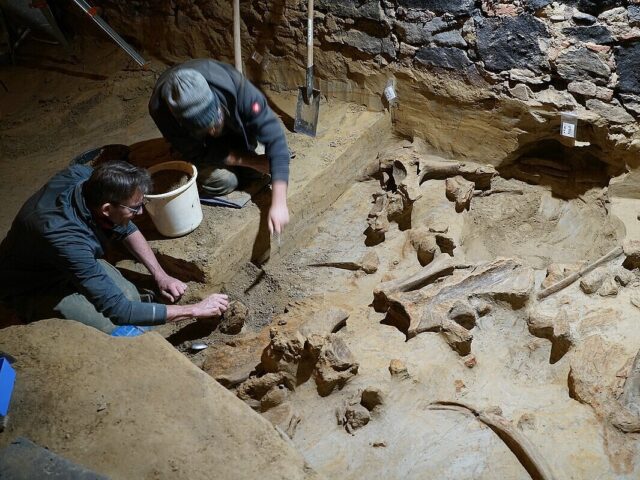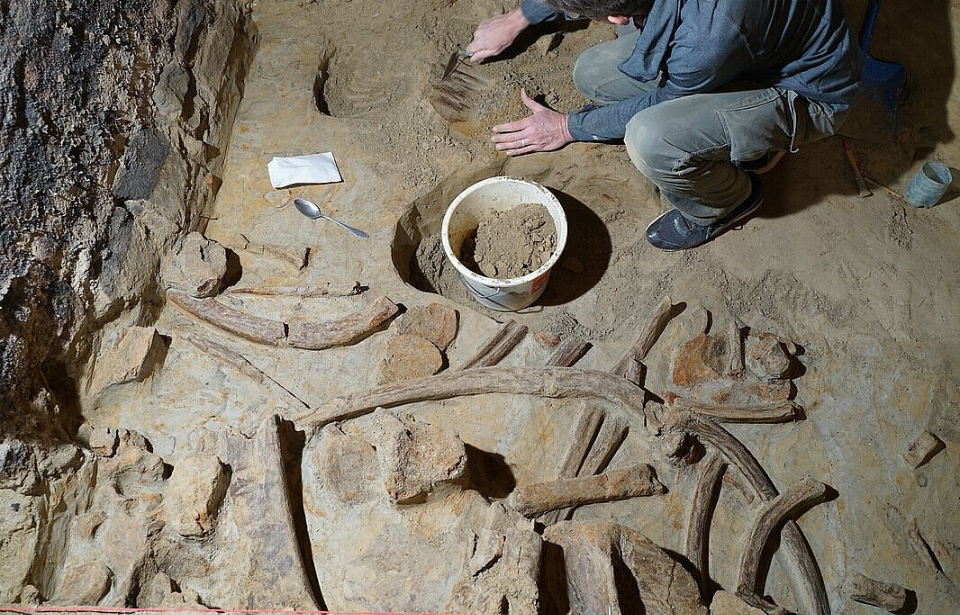A man in Austria has accidentally made an incredible discovery after setting out to renovate his wine cellar. Buried in the cellar, he found a set of Stone Age mammoth bones he believed to be wood at first. Who knew a love for wine could lead to such an amazing discovery?
He was renovating his wine cellar

Andreas Pernerstorfer, an Austrian man living in the village of Gobelsburg, west of Vienna, was renovating his wine cellar when he came across something incredible. While digging up the cellar, he came across the remains of a prehistoric mammoth. Shocked by the find, he contacted the authorities, who identified it as the bones of at least three Stone Age mammoths.
Speaking with the Austrian Broadcasting Corporation, ORF, Pernerstorfer said, “I thought it was just a piece of wood left by my grandfather. But then I dug it out a bit and then I remembered that in the past my grandfather said he had found teeth. And then I immediately thought it was a mammoth.” The Austrian Archaeological Institute of the Austrian Academy of Sciences called the find an “archaeological sensation.”
Excavating the mammoth bones

Since the middle of May 2024, researchers have been excavating the cellar, gathering more details on the bones. Given the stone artifacts and charcoal found at the site, archaeologists Thomas Einwörgerer and Hannah Parow-Souchon say that the bones can be dated between 30,000 and 40,000 years old.
The Institute made a statement explaining how a comparable discovery to this hasn’t been made in over 100 years. “During the excavation there, the cellars in question were completely cleared out. Other comparable sites in Austria and neighboring countries were mostly excavated at least 100 years ago and have largely been lost to modern research,” it said.
The fate of the bones

Parow-Souchon explained that this is one of the first instances in which archaeologists have been able to use “modern methods” to investigate a discovery like this in Austria. As such, researchers have been able to determine some possible conclusions as to how the mammoth bones got there in the first place. Particularly, this find begs questions about how people of the Stone Age hunted these massive animals.
“We know that humans hunted mammoths, but we still know very little about how they did it,” Parow-Souchon said. Early research suggests that the mammoths may have died at the spot where their bones were discovered. This may have been the result of Stone Age people chasing them into a trap set at that spot.
More from us: Archaeologists Discover 1,000-Year-Old Ice Skate Made From Animal Bone in Czech Republic
Once the bones have been excavated from the site, they are expected to be taken to the Vienna Museum of Natural History.
